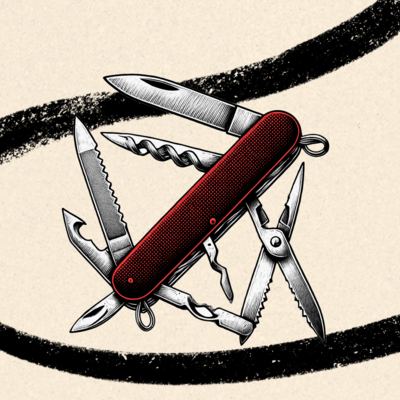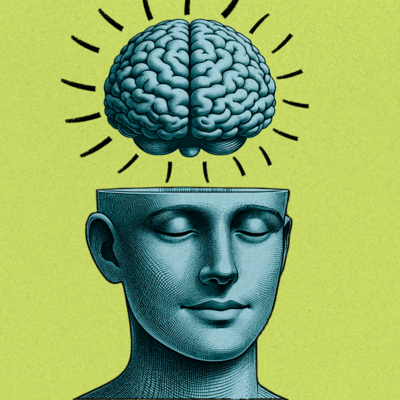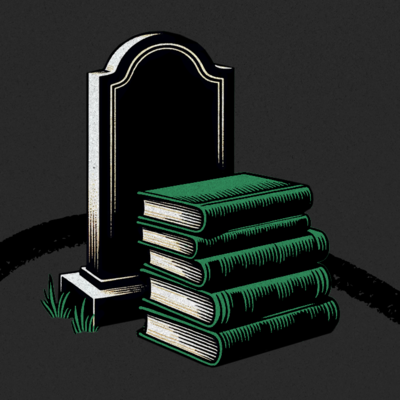
The Vision Pro is a dream. I mean this in two senses:
It’s wonderful, it’s inspiring, it’s powerful. It is a machine built to create peak experiences. It brings your whole body into the digital world, so it can create high points in flow, in thought, in empathy, and in excitement.
We are spatial beings, and our ability to think, create, and build expands when we are able to do it in three dimensions. This is why the Vision Pro is a dream.
But it’s a dream in another sense: It’s frustrating. You often can’t quite do exactly what you want. It comes close, but the lack of great software limits what is possible to do with it today.
If you’re thinking about buying one, you should ask yourself: How much money is a dream worth to you?
The living room of the future
I’m typing this to you in a gigantic Google Docs document that is shimmering in front of the tall white wall of my living room. I can control the document with my eyes and by pressing the tips of my thumb and pointer finger together, as if tonight, for one night only, I’m Gandalf or Matilda.
From my couch, I can see out of my window into a small Brooklyn backyard where a London plane tree I’ve named Edgar stands rooted to the frozen ground. Tonight, his branches, which are just starting to show tips of green, look like spread wings to me. They flap lightly in the wind.
I’m writing from the couch, and I can see the living room around me. My hands are typing on my laptop keyboard, controlling the Google Docs window floating in front of me. But I keep feeling the urge to look at my phone, sitting on the couch next to me.
I reach up to twist the crown on my Apple Vision Pro clockwise, and presto.
My living room is replaced by the moon, with gray rocks like pimples and large boulders strewn about. There are deep valleys and bulging mountains glowing against the deep black sky. The sun is a white pinprick the size of a cue ball above the horizon to my right.
My Google Docs document still floats in space above the lunar landscape, and my phone is nowhere to be found. It’s a perfect workspace. No distractions: just me and the writing.
I continue typing, but now I can’t see the keyboard beneath my hands. My fingers hang there in space like ghosts, tapping solidity that I can’t see. Below them is nothing but the surface of the moon.
When the dream is good
I played with the Vision Pro all night. At one point, my field of vision contained:
- My Macbook monitor mirrored onto my aforementioned living room wall, set big enough that I could comfortably use Notion and Google Slides side by side
- To the right of that, my Muse app open with a book I was reading
- To the right of that, at a neck-aching 45-degree angle in front of my TV, my text messages
- And then all the way on the left side, at a distance that would make Magellan get the tingles, my Notes app
It was over the top. It was luxurious. It was a productivity set-up from the gods.
At another point, I opened a Scary Pockets music video and threw it on my ceiling. I danced while laying on my couch. Then, I mind-mapped an essay I was writing by spreading little bubbles with ideas all around my apartment.
Later, I turned off my living room, set my environment to White Sands—a desert in New Mexico—and looked out at the burning horizon. I turned on a meditation by Buddhist teacher Rob Burbea, and for a second, I forgot that I was in Brooklyn.
These are all things I can do with my phone or my laptop, but in the Vision Pro they are heightened. They hit harder. They’re more visceral. When I say the experience of the Vision Pro is dream-like, that’s what I mean.
It’s also dream-like in that as I used it, I noticed a comfortable and confident sense that I was inside of a sci-fi novel. My brain accepted this in the moment. I can control stuff with my eyes now. My living room turned into the moon. These were statements, not questions. I had a palpable sense of wonder presented in the indicative instead of the interrogative mode.
It felt…normal. But when I look back on it afterward, in the muted light of reality, I think: That was totally wild, and I can’t believe that happened. Did it really happen?
It’s sort of like those warmly psychedelic dreams where you’re lovingly feeding yogurt to your pet coffee cup while your girlfriend who is definitely your girlfriend but is also definitely your high school crush smiles at you alluringly. And then you realize that you’re all out of yogurt, so you jump into the air, ascend to the clouds, and fly smoothly across the country toward Seattle, where your favorite yogurt shop is.
It’s lovely. It’s amazing. You feel bright and happy. And then you wake up and you’re like what the fuck was that? There’s a lot to unpack about your relationship to yogurt, obviously.
The combination of wonder and familiarity that makes it dream-like is a testament to Apple. It’s the same game the company has managed to master with features like the trackpad on the MacBook. Apple didn’t invent trackpads, but it did perfect them. There’s something so subtly better about them than the trackpads on other laptops.
I’m not a frequent VR user, but I get the same feeling about the Vision Pro as compared to the Oculus and other headsets I’ve tried. There’s overlap, but something is better, more intuitive, and more wonderful about this experience.
And I might use it to do work going forward. I’ve been writing for a long time about the way our brains use physical space to think. We are embodied beings—which we forget when we get lost in the 2D squares on our ubiquitous phones and computers.
Your body knows a lot of things that your mind doesn’t. And the Vision Pro brings your body into a 3D world that opens up some previously unimaginable possibilities for thinking, creating, and building.
When I was writing a novel several years ago, I used my wall to organize it. Novels are gargantuan, complex thinking tasks. They are long and detailed, and a detail on page nine can affect what happens on page 203—and vice versa. It can be hard to engineer this.
But somehow, breaking the novel down into pieces, writing them down on Post-it Notes, and organizing them on the wall, where I could easily pick them up and move them around, helped the whole book click for me in a way that it didn’t on a 2D screen.
I think something similar is on the horizon for users of the Vision Pro. It’s not all yogurt and cloud-surfing, though. There is another side to the dream that is the Vision Pro.
When the dream is frustrating
You know those dreams where you just can’t quitteeee do something?
For me, it’s a football dream. I’m back in high school playing quarterback during a lunchtime game. A receiver streaks through the end zone 60 yards away from me. I can see him, red basketball shorts a blur, a cornerback wearing Chuck Taylors trying desperately to keep up. It’s a dream, so I know I can throw that far. I heave the ball and it’s right on target, it’s going to be a touchdown, and then it just glances off his fingertips.
That’s what the Vision Pro feels like at times, too.
Any time I have to type something, my heart sinks. If you don’t have a physical keyboard available, a facsimile floats into your view, and you have to look at each key and then press your thumb and pointer finger together to click. It’s as slow as a heart transplant. It’s also inexact. It could be because I wear contacts, or I’m just not used to it yet, but I often click the wrong key.
(To be honest, if I could click with my hands by reaching out and touching something, that might have worked better than tracking where I’m looking. I wonder why Apple didn’t do that.)
That’s not the only downside. For example, when I got tired of working, I decided to watch a TV show. I’m about halfway through Jason Segel’s excellent series Shrinking. I wanted to watch it in cinema mode, which makes it look like you’re in a theater. The screen is as large as a house, and you can sit in the front, the middle, or the back. It’s a whole theater reserved for you, and the snacks come at a reasonable price.
Before I sat down, I grabbed a pint of Chunky Monkey from my freezer and a spoon. I turned on the show, sat back down on my couch, and twisted the crown to turn my living room into a theater. I reached out for the ice cream on the coffee table—but I couldn’t see it. It was replaced by a view of the theater I was in. I fumbled my way to it, and then had trouble getting a spoonful of ice cream into my mouth. I missed and accidentally painted my face with Chunky—or Monkey, I couldn’t tell which.
The Vision Pro is a little clunky at times. But I can live with that. The hardware is definitely good enough.
But what isn’t good enough is the software. There just aren’t many apps for it. Most of the big companies—Spotify and Netflix, for example—are conspicuously missing. I downloaded apps for meditating, mind-mapping, and star-gazing. All of them are okay, but they could be amazing. It feels like the B team is developing for this, and the Vision Pro needs the A team. Most of the apps that are present are re-skinned iPad apps, rather than apps that truly take advantage of everything the Vision Pro offers.
This makes sense—it’s an early-adopter product. But I can’t help feeling like Apple could have done a better job of using some of its billions to incentivize developers to make a few mind-boggling things with it. Or, at least, refrained from alienating developers with its App Store policies so much so that many are refusing to participate in this ecosystem.
Apple is used to relying on their platform dominance to attract developers. Absent that, they could experiment with running a creator-fund style program to incentivize developers to invest in the platform. I’m sure they’ll figure out a solution in time.
The verdict
The Vision Pro costs $3,499. I’ll ask you again: How much would you pay for a dream?
This post continues below for paying subscribers.
Find Out What
Comes Next in Tech.
Start your free trial.
New ideas to help you build the future—in your inbox, every day. Trusted by over 75,000 readers.
SubscribeAlready have an account? Sign in
What's included?
-
Unlimited access to our daily essays by Dan Shipper, Evan Armstrong, and a roster of the best tech writers on the internet
-
Full access to an archive of hundreds of in-depth articles
-
-
Priority access and subscriber-only discounts to courses, events, and more
-
Ad-free experience
-
Access to our Discord community


